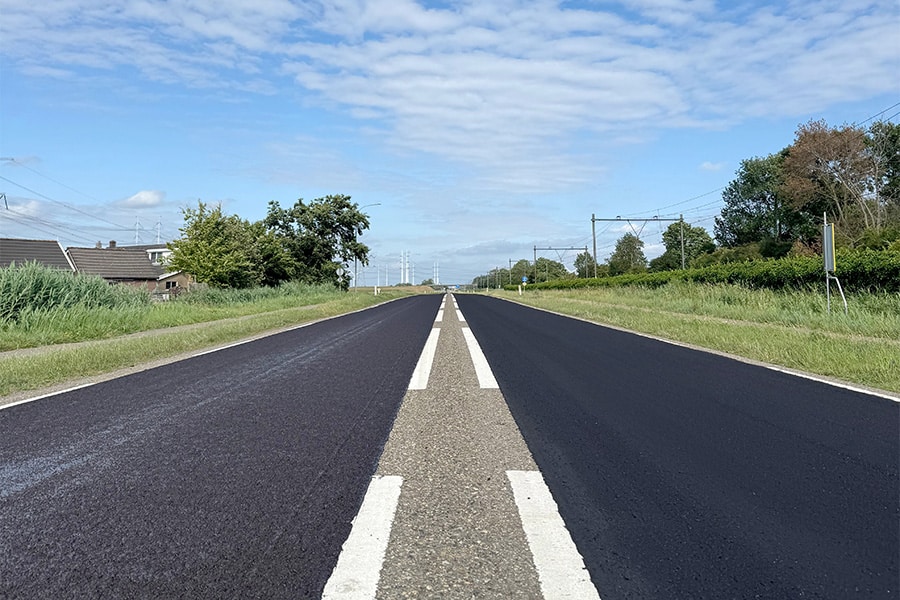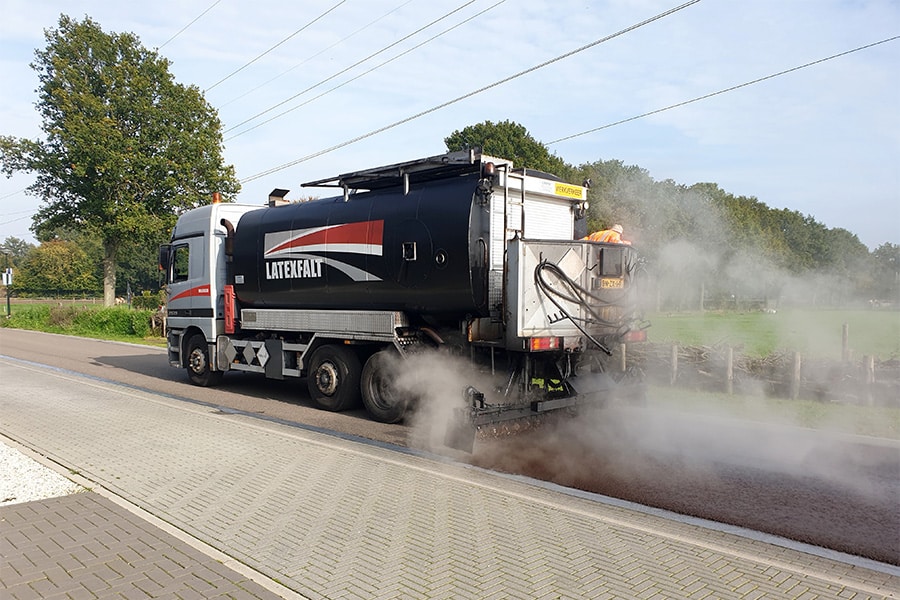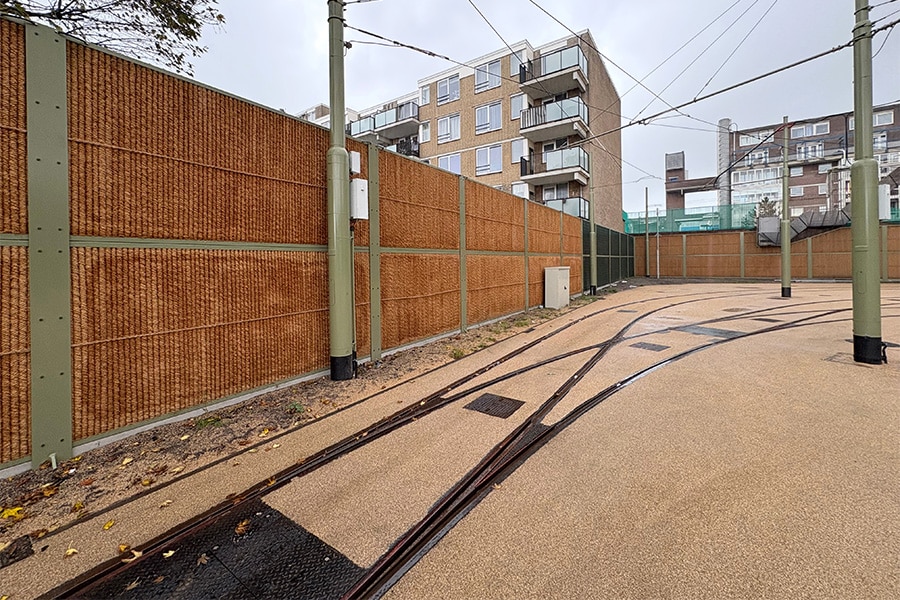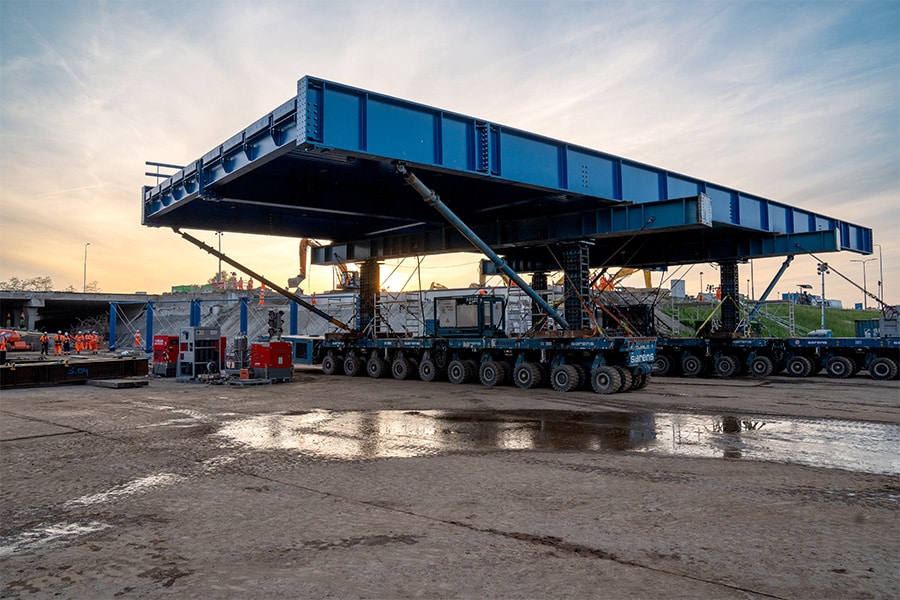
Successful design and installation of complex four-part auxiliary bridge
The construction of the existing viaduct (KW58) in the A16 is no longer satisfactory. Therefore, in addition to the construction of the A16 Rotterdam, construction consortium De Groene Boog has been given another serious assignment by the Department of Public Works. At an earlier stage Civiele technieken deBoer was already mobilized to install a support structure under the viaduct, and during this year's Ascension Day closure, the specialist in civil construction and jacking techniques drove in the eastern auxiliary bridge (TK59). A particularly complex specimen, by the way, consisting of twice two sections, which was assembled entirely in-house by sister company Rijnstaal.
Over two years ago we received a call from De Groene Boog whether we could take care of the emergency support structure of viaduct KW58 in no time, begins Joost Beumer, project manager at Civil Engineering deBoer. "During a visual inspection, it was found that the structure was no longer adequate and required a complete replacement rather than renovation. Together with fellow company Heijmans, we managed to mobilize more than 400 tons of material within a week and build a support structure under the existing viaduct so that it could continue to perform its function safely. That gave construction consortium De Groene Boog the opportunity to prepare a solid solution."
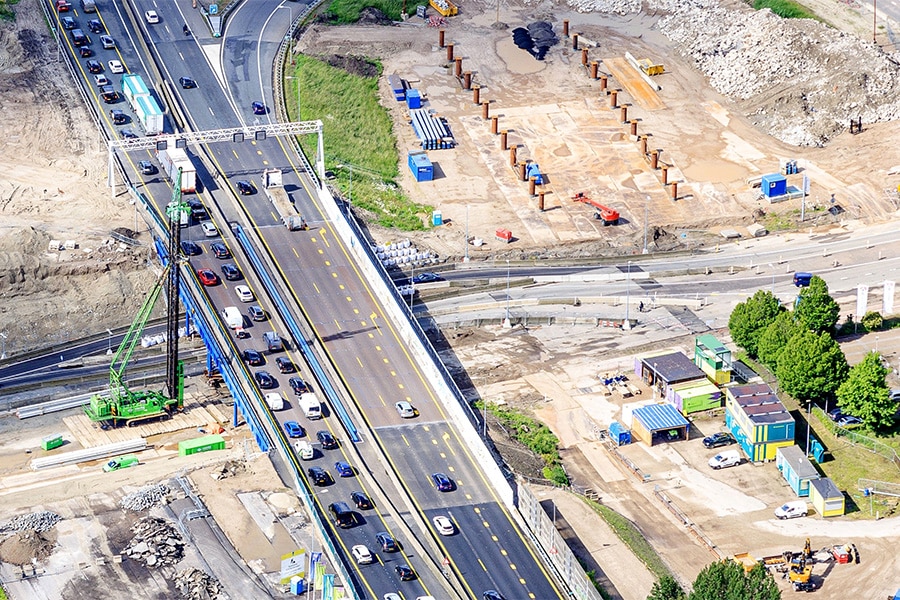
Connection arch
To make this complete replacement possible, through traffic will be temporarily diverted over two auxiliary bridges, one on the east side of the existing structure for which Civil Engineering deBoer was called in, and one on the west side provided by Retro Bridge. "The auxiliary bridge we built actually consists of two parts. One for traffic on the A16/A20 connecting arch towards Hoek van Holland and the other for the A16/A20 connecting arch towards Gouda," Joost explains. "The two auxiliary bridges each consist of two identical 33-meter segments. So the total span of both bridges is 66 meters." Small detail, the auxiliary bridge had to be able to be installed over the long Ascension weekend. "We only had four days. Then various methods of execution pass the review, but because of the short time frame, space and the many other activities that had to be carried out during that weekend, only one solution remained: assemble the bridge sections on site and then drive in and install them ready-made."
Quality requirements
TK59 was designed and produced in-house by Civil techniques deBoer, with the cooperation of sister company Rijnstaal, which is housed at the same location in Nieuwegein. "We mainly used new parts, because the bridge had to be produced in accordance with NEN-EN1090 EXC.3 and ROK. Using existing equipment proved difficult in connection with the traceability of the parts. The bridge is completely modular in line with our existing systems. In the process, clever features from previous projects were applied, so that we could respond to deviating dimensions and the bridge could later be used for future projects. The parts were then transported and assembled in 4 weeks before the Ascension weekend on a site in the armpit of the A16 at exit 27, Prins Alexander." The auxiliary bridge was assembled there in two times two parts on a sliding structure by Civil Engineering deBoer. "Then, before the weekend, the first two sections were taken over on Self-Propelled Modular Trailers (SPMTs) so that we could also slide the last two sections under the reach of the SPMTs."
During the Ascension weekend, the auxiliary bridges were successfully installed. The two TK59 auxiliary bridges rest on an abutment, an intermediate and an end support and will remain in place for up to a year. Then they will be dismantled and can be reused elsewhere.
